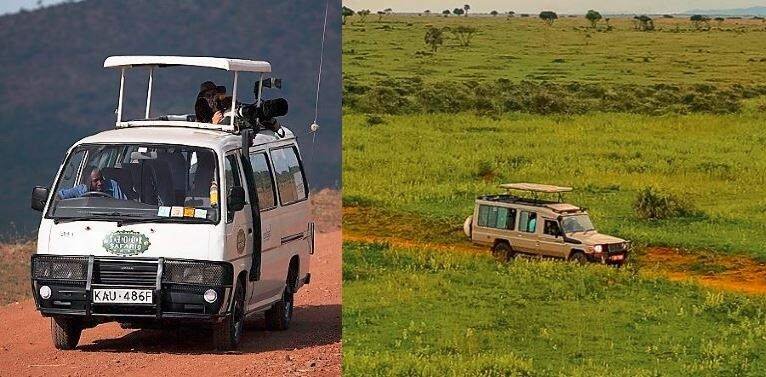Onion farming is among the profitable agribusiness ideas in Kenya. However, to be a successful onion farmer, you need to know what goes into onion farming, like farm preparation and the type of fertilizers to use. This will prevent you from blunders that make onion farming in Kenya unproductive.
Onion farming in Kenya thrives in Meru, Kakamega, Kieni, Kajiado, Narok, Oloitoktok, Emali, Karatina, Makueni, and Naivasha. Bulb and spring onions are the main types of onions that perform well in the Kenyan climate.
In this article, I’ll discuss the conducive conditions for onion farming, the types of onions that perform well in Kenya, and how to prepare your land before planting the onions. Keep reading to learn how to become a successful onion farmer in Kenya
What are the Optimum Conditions for Onion Farming in Kenya?
The optimum conditions for onion farming include well-drained fertile soils and a moderate rainfall ranging between 500 to 700mm annually. Onions need moderate rainfall to prevent water logging in the onion bulbs.
Here is a simplified table of ecological requirements for onion farming in Kenya:
| Temperature | 15-30c |
| Altitude | 500-200m above sea level |
| Rainfall | 500-700mm well-distributed |
| soils | Fertile, well-drained soil with a PH of 6-7 and good water holding capacity. |
Variety of Bulb Onions in Kenya
There are several varieties of onions farmed in Kenya. These varieties are based on the climatic conditions they thrive best in. The most common types include:
Bombay Red

Bombay red does well in warmer and dry conditions. Its seeds produce small to medium-sized onions which are deep purple, globe-shaped, and very pungent.
Find Out: The Cost of Onion Farming in Kenya
Texas Early Grano
This variety is high yielding and well adapted for the tropics. It takes 120 days to mature from transplanting. The type is characterized by its white color and is best for preparing salads.
Red Creole
This variety is characterized by its spicy taste. It has a red, flat-round, globular bulb appearance.
Neptune F1
This is a wide variety of shining red bulbs. They are best for salads due to their excellent spice. They have red skin and a flattened globe shape. They take around 120 days to mature and have a storage duration of 120 days.
Red Star F1
Red star f1 has a globe shape, uniform medium to big bulbs with excellent deep dark red color. It has the right field holding capacity and has a storage period of up to 5 months. The variety is also tolerant of purple blotch and neck rot diseases.
Tropicana F1
A strong, pungent taste and large thick bulb characterize this breed. The array takes 100 days to mature, and its potential to yield 20 tonnes per acre.
Other less common varieties are:
Red Pinoy F1
The breed has a maturity duration of 90 days from transplanting and a storage period of up to 6 months at room temperature and has an intense urgency. It’s tolerant to purple blotch, and it has the potential to yield 30 tonnes per acre.
Jamber F1
Jamber F1 has a dark red globe appearance. It can be grown in open fields and greenhouses and is easy to cure. Jamber F1 produces large bulbs with a yielding potential of up to 23 tonnes per acre.
Red Passion F1
Red passion F1 is deep red and has a storage duration of up to 5 months. It’s known to be tolerant of purple blotch and pink root diseases.
Spring Onion Varieties
Spring onion varieties include white Lisbon, Italian giant, American flag, and Spring green bunching.
Onion Planting Process in Kenya
Various onions have different planting method that guarantees success in productivity at different levels.
Spring Onion
Spring onions are more versatile and can be grown anywhere with a flexible budget.
You can grow spring onions even in pots in your backyard, making them more manageable than the bulb onion. However, the spring onion has a short storage duration and can only be used within a short time before its leaves start to turn yellow.
Bulb Onion
As the name suggests, this type of onion has a bulb shape. Bulb onion is commonly used in many homes in Kenya; hence it’s always in demand. The main reason Kenya imports onions at some points: the onion farmers we already have cannot meet the demand.
Bulb onions usually are dried or cured to increase their storage lifespan. Meaning when cured, their shelf life is prolonged and can stay for a longer time before going bad. Onion curing means removing some moisture from the onion that can be disadvantageous to its shelf life.
Generally, bulb onions take around 3-4 months to mature. Much is done to ensure its successful harvest. In detail,
Land Preparation for Bulb Onion
Plough your land as deep as possible 2 to 3 weeks before planting. Harrow the field 2 to 3 times to achieve the fine tilth required for growing onions. Onion strives best in deep, well-drained soil and on a well-prepared seedbed.
Apply 400kg per every 100m2 or 40 tonnes of well decomposed organic manure and thoroughly mix with the soil.
Nursery Preparation
Make a nursery for your seedlings near the planting field to make it easier during transplanting. Here is a guide to follow when preparing your seedling nursery.
- The seedbed should be under shade, or you can also prepare a raised cover to protect seedlings from direct sunlight.
- Adjust the bed to 1m wide while mixing well-decomposed compost manure.
- Make rows 1.5cm apart on the seedbed and drill the seed thinly 1cm deep.
- Cover your seedbed using soil and mulch. Onions germinate within 7-10 days.
- Ensure you water the seedbed daily, but don’t flood it. Remove the mulch once the seeds germinate.
The rate of onion seed per acre varies from 0.8kg to 1.2kg. It’s critical to plan your timing to ensure your onion matures when its demand is at its peak so you can get the most out of your onions.
Propagation and Planting
Onions are grown from transplants or set seeds. Transplant the seedlings once they reach pencil thickness, around 6 to 8 weeks after sowing in the nursery. For seedlings raised in nursery plant at a spacing of 10cm by 8cm from one plant to another and 30cm between rows.
Drill holes 2.5cm deep and 10cm apart for direct seeding, thin seedlings 4-6 weeks after they reach 10-15cm height, and ensure the plant spacing is 10cm by 8cm or 10cm by 10cm.
You should transplant your seedlings early in the morning (6-10 am) or late in the evening( 4-6 pm) when the sun is not hot and firm up the seedlings with the surrounding soil. To speed the take-of of your onion, you should cut off 50% of the green tops.
It’s essential to perform a soil analysis test on your field before planting to determine the soil nutrient requirements.
Around 7-10 days before the day you intend to transplant;
- Remove the shade cover to help the seedlings get used to more potent and direct sunshine.
- Reduce the watering rate gradually to strengthen your seedlings in terms of structure.
You should water your seedbed before transplanting to prevent seedlings’ damage as you pluck them from the seedbed.
Fertilizer Application
Fertilizer plays an essential role in the development of healthy onions. Apply fertilizer at the right time to complement the required nutrients for good crop performance.
During planting, apply 80kg TSP/DAP or 10-16 tonnes of well-decomposed manure per acre. Ensure that it’s well decayed, as fresh manure will enhance thick leaf growth at the expense of bulb formation.
Top Dressing Onions
Onion topdressing can be done in two parts.
- Top-dress your onions with 40kg of CAN per acre 30 days after transplanting
- Perform the second topdressing 45days after transplanting using 80kg of CAN per acre.
You should complete the topdressing exercise before the onion starts to form bulbs. Also, avoid exceeding the recommended nitrogen levels as it can lead to thick neck formation.
Onion Irrigation
It’s an excellent practice to keep watering your onions in places with minimal rainfall. Otherwise, onion farming in Kenya is done during rainy seasons.
Once the onion begins to mature, you should reduce irrigation water. Too much water results in onion rotting after growing. You will know that the onion has developed once its leaves turn yellowish.
Weed Management
Poor weed management is one of the causes of poor onion farming in Kenya.
During the growing season, Keep the onions field weed free to prevent competition for growth resources. Common weeds that grow alongside onions include star grass, Mexican marigold, thorn apple, and snow thistle.
To control weeds: You can use pre-emergence herbicides, carry out light hand weeding two weeks after transplanting or use a hoe to dig out weeds as they emerge.
Onion Diseases and Disease Management
Onion diseases can cause significant losses in both the quantity and quality of your produce. It’s therefore critical to pinpoint any disease attacks and control them before the infection spreads across your onion field.
Some onion diseases include
Onion Rust
Onion rust is a disease caused by a fungus. It’s common in high-temperature, high humidity, and highly populated farms. The disease appears as small reddish dusty blotches on the foliage. Severely attacked leaves turn yellow and die.
To control onion rust: Practice proper field hygiene, crop rotation, and spray fungicides.
Purple Blotch
Purple blotch is also caused by a fungus. It appears as small white spots on leaves and spreads quickly under damp conditions. The appearance of large purplish patches encircled by yellow to orange border indicates a severe attack. The disease can spread to the onion bulb, causing a wet orange patch from the neck.
To control purple blotch: Use wider spacing, practice proper field hygiene, crop rotation, plant resistant varieties like red Pinoy and spray using copper fungicide.
Neck Rot
Neck rot is caused by a fungus penetrating the bulb through the flesh’s cracks. The infection appears as s a dark brown spot on the top part of the bulb during storage.
To control neck rot: use fungicides treated seeds, avoid using high nitrogen fertilizers, dry bulb onion after the harvest, and store only bulbs with dried out and thin necks.
Onion Pests and Pest Management
Pests can cause a lot of losses in terms of the quantity and the of the produce. Several pests attack onions. Common onion pests include
Onion Thrips
These are tiny thin- winged insects that attack the foliage within the leave sheaths. Slivery sunken blotches appear on the infected leaves. If the leaves are severely infected, they wither and die.
To control onion thrips: Practice field hygiene, maintain proper irrigation, and use insecticides.
Leaf Miners
These tiny yellow and black flies lay their eggs on the foliage. The eggs then hatch and feed on the leaf interior, leaving thin, white and curving trails on the leaves. This can cause premature leaves to fall from the plant.
To control leaf miners: avoid leaving plants in the soil after harvesting and use insecticides.
Onion Flies
Onion flies appear as white cream in color. The pest damages the onion by eating the lateral root causing tunnels into the taproot. As a result, the plants wither and finally die.
To control onion flies: Practice crop rotation, solarize soil to destroy pupae, avoid soil with high organic and observe soil hygiene.
Onions Harvesting
Onion harvesting takes time and requires hot weather conditions. The suitable period to harvest onion is during the dry seasons. The onions can be dried and cured faster during this season, extending their shelf life.
Spring onion is ready for harvest when it reaches a height of about 13-15cm and has a thickness of around 1 ½ cm. Spring onion takes 2-4 weeks to mature. Bulb onion is ready for harvest when the leaves dry up or once a shinny coating starts to form on the bulb’s top. Generally, bulb onion takes 3-5 months to mature.
Bulb onion should be sun-dried before being stored in suitable facilities with proper ventilation to help in bulb curing.
Bottom Line
Onion farming in Kenya is an ideal way to get one’s hands dirty to earn an extra income. If you’re passionate about farming, then onion farming would be an excellent investment for you to consider.
But before starting, you need to understand the varieties of onions planted in Kenya, the areas they thrive best, and the planting process. The best thing is that you can find all that information here.
If you follow these guidelines, no doubt you will navigate farming in Kenya with a lot of success.







